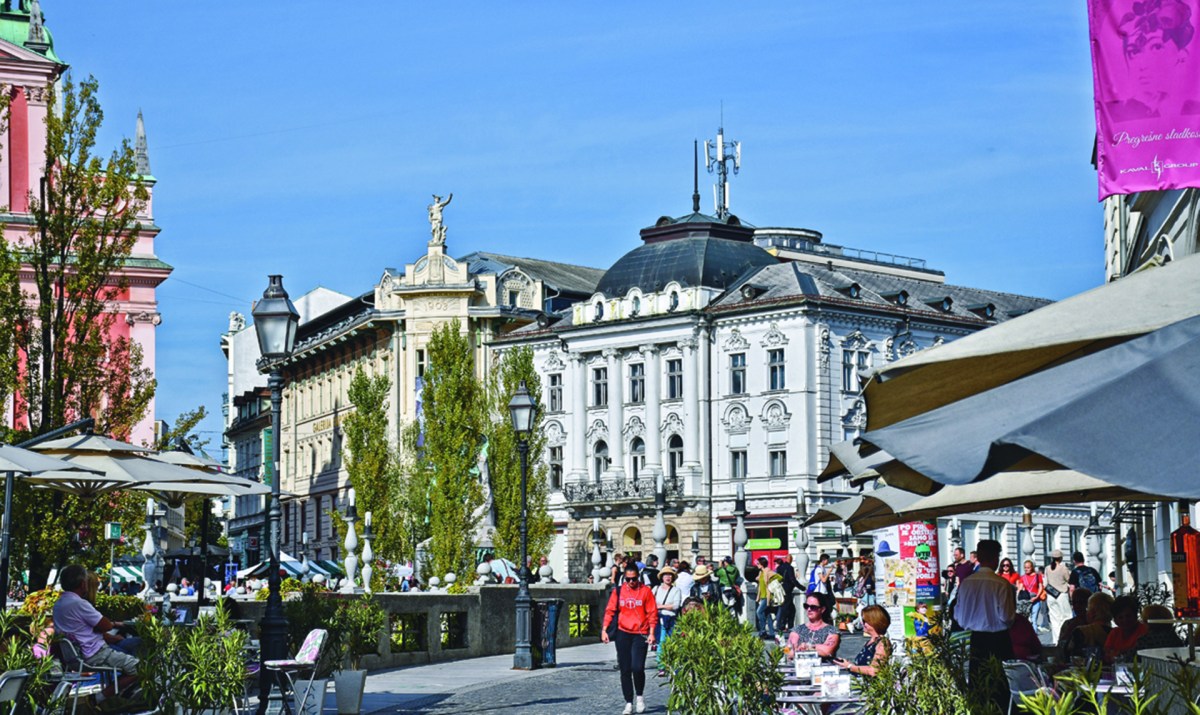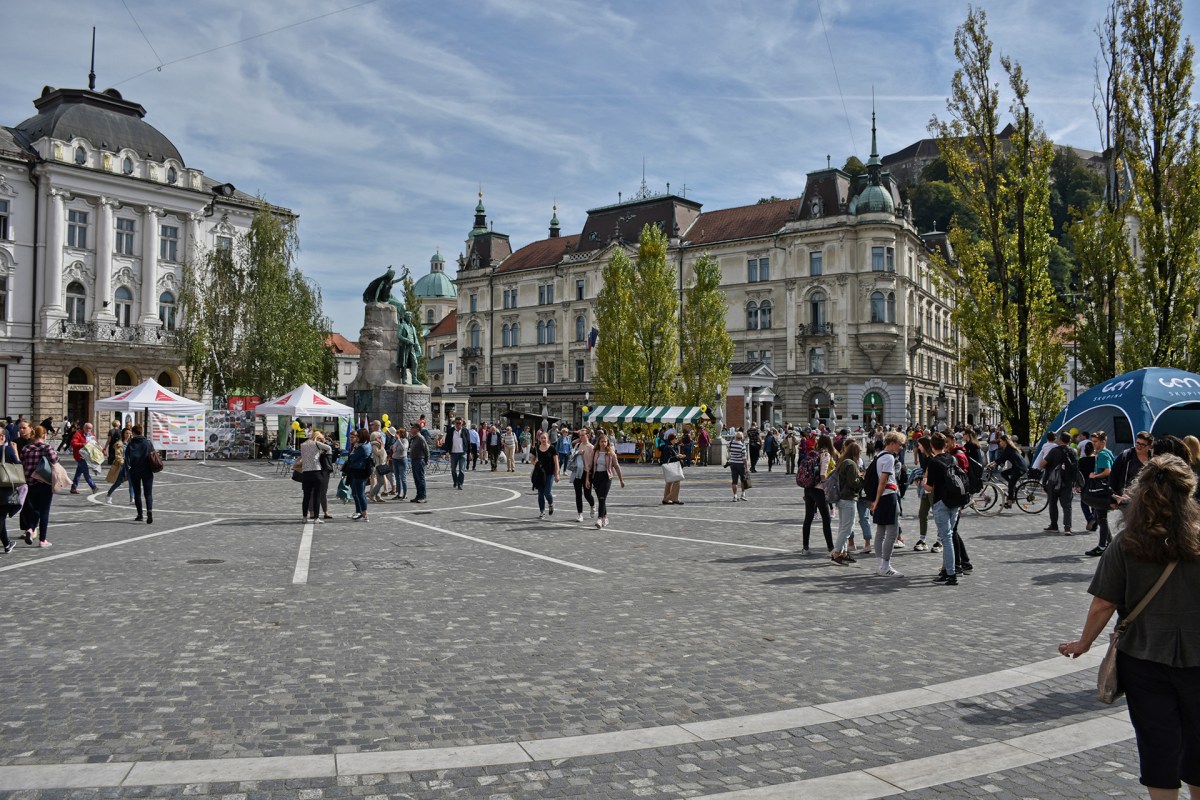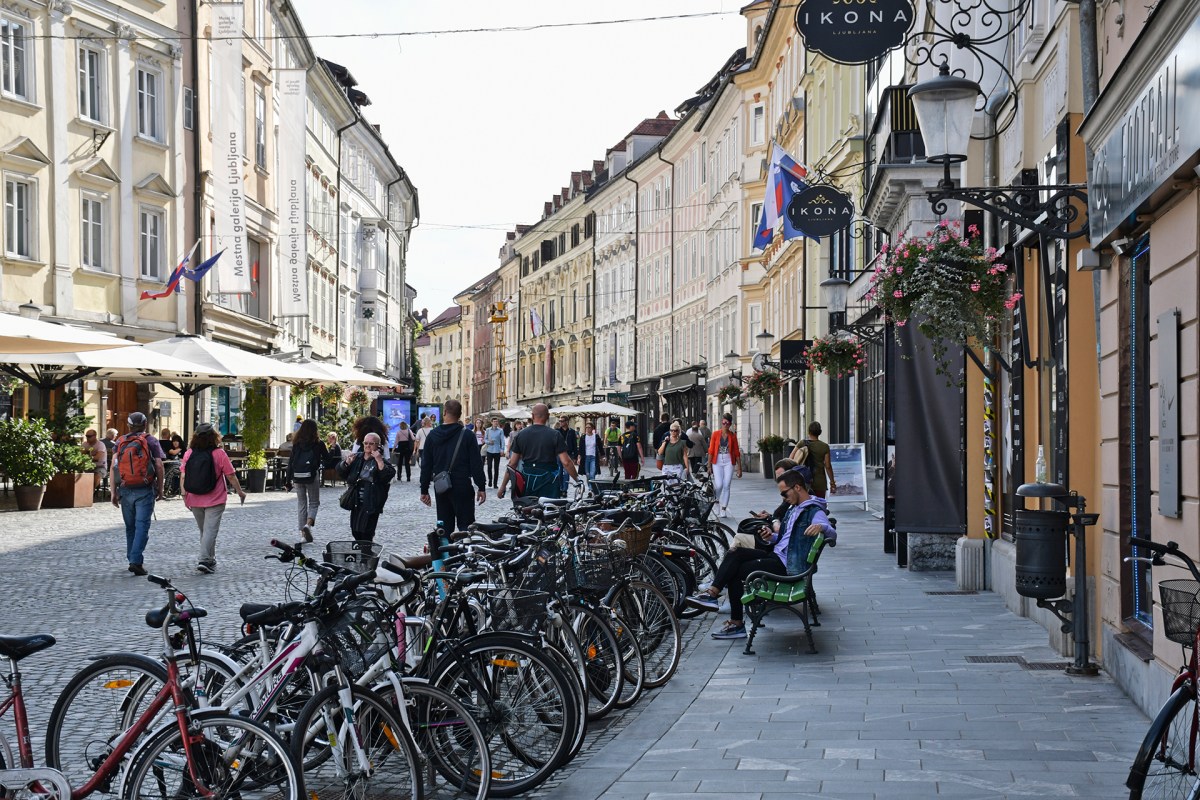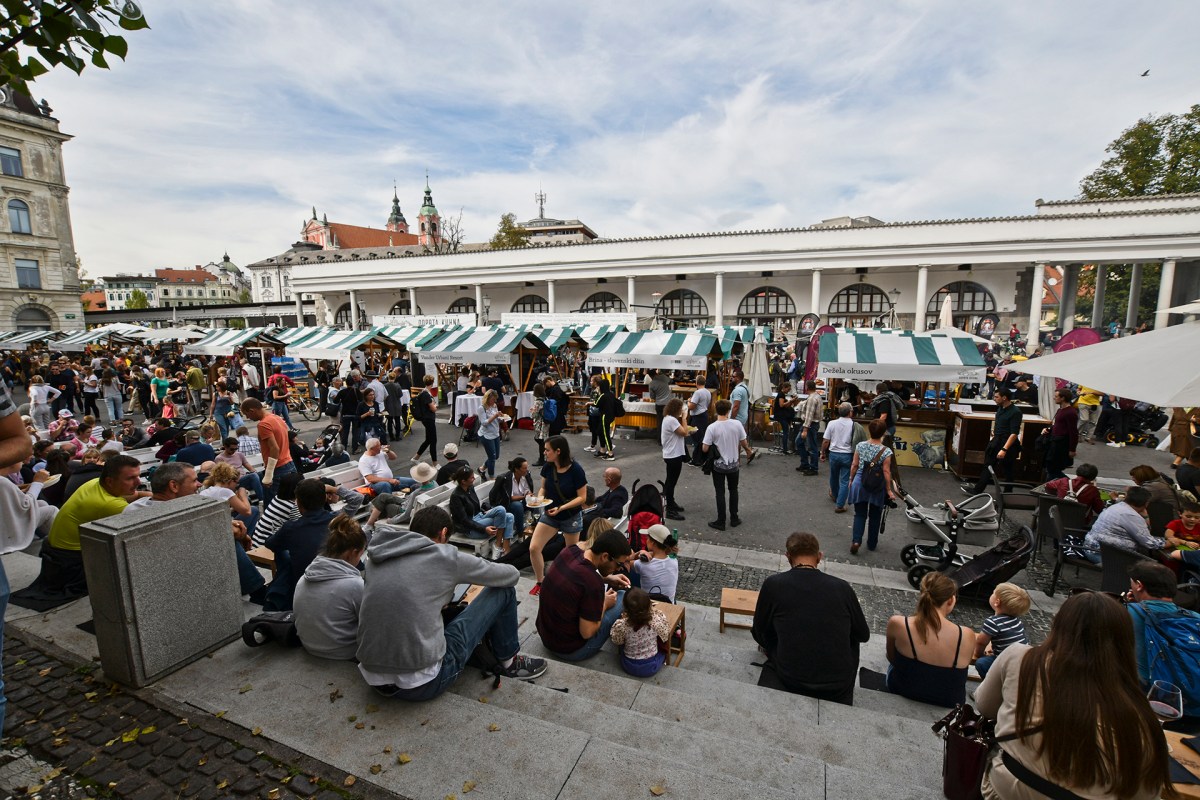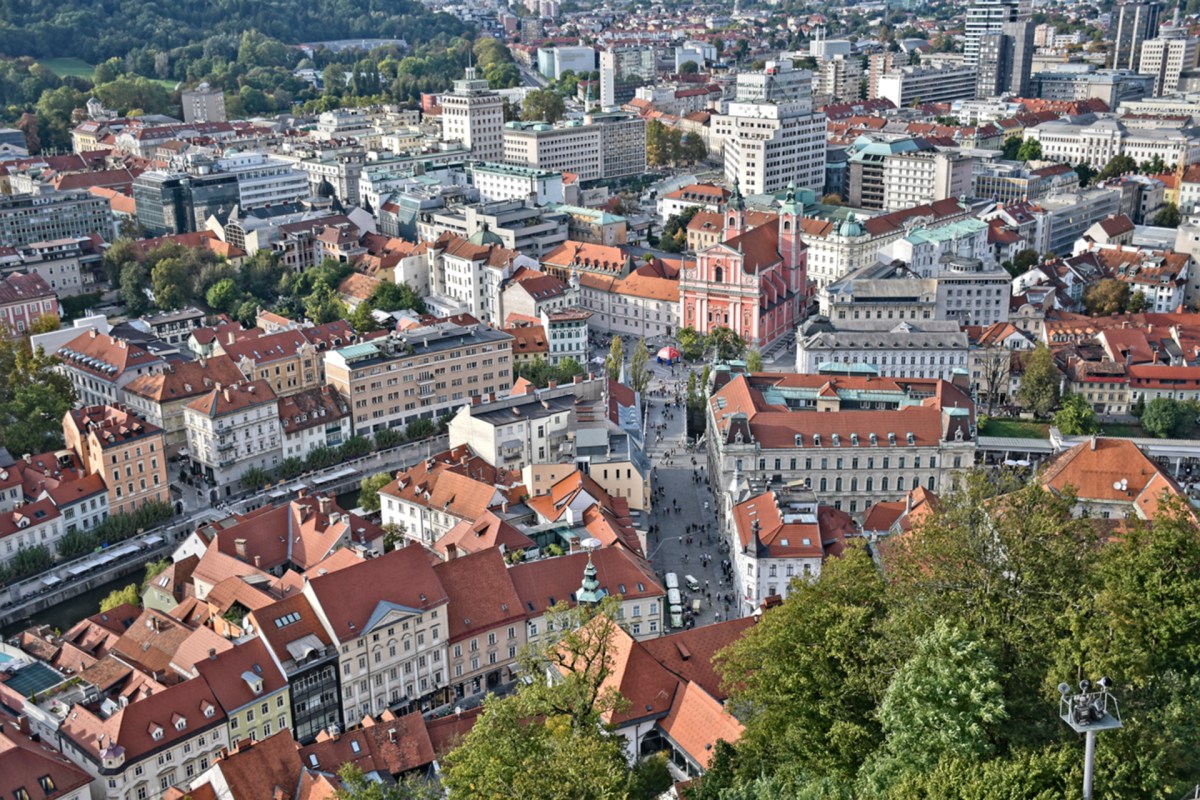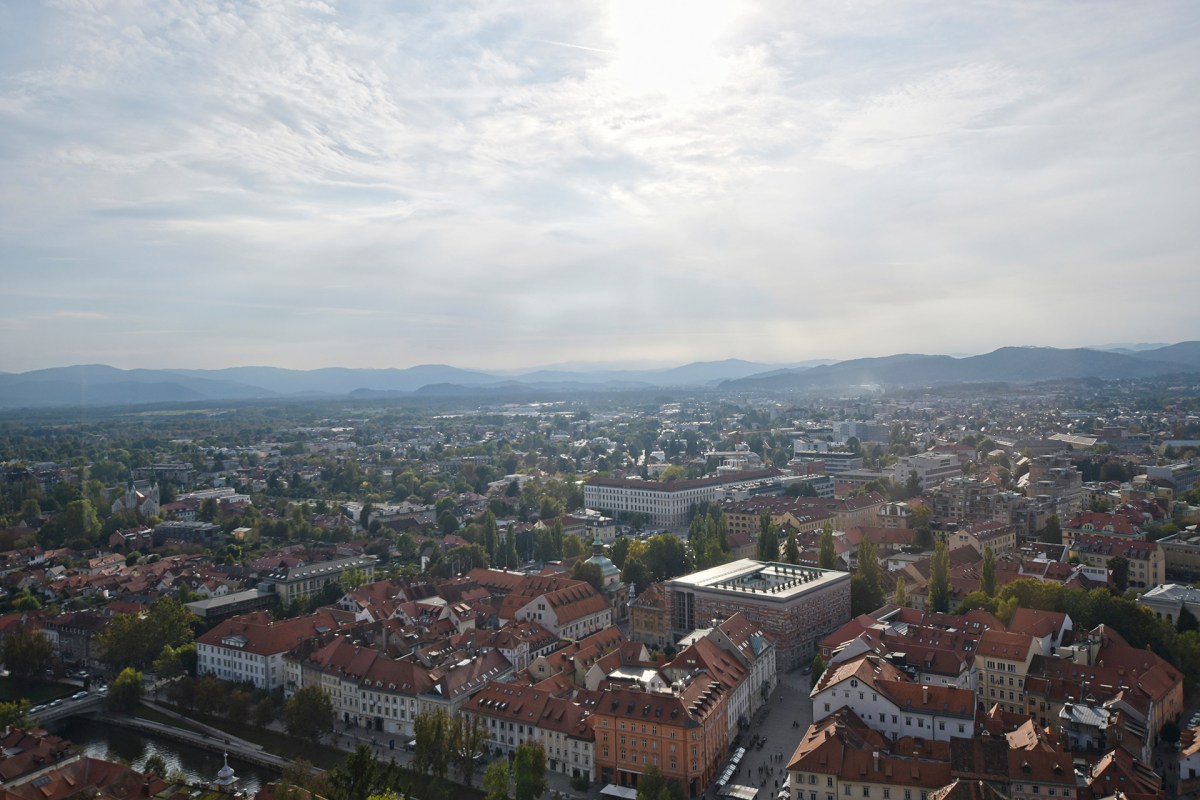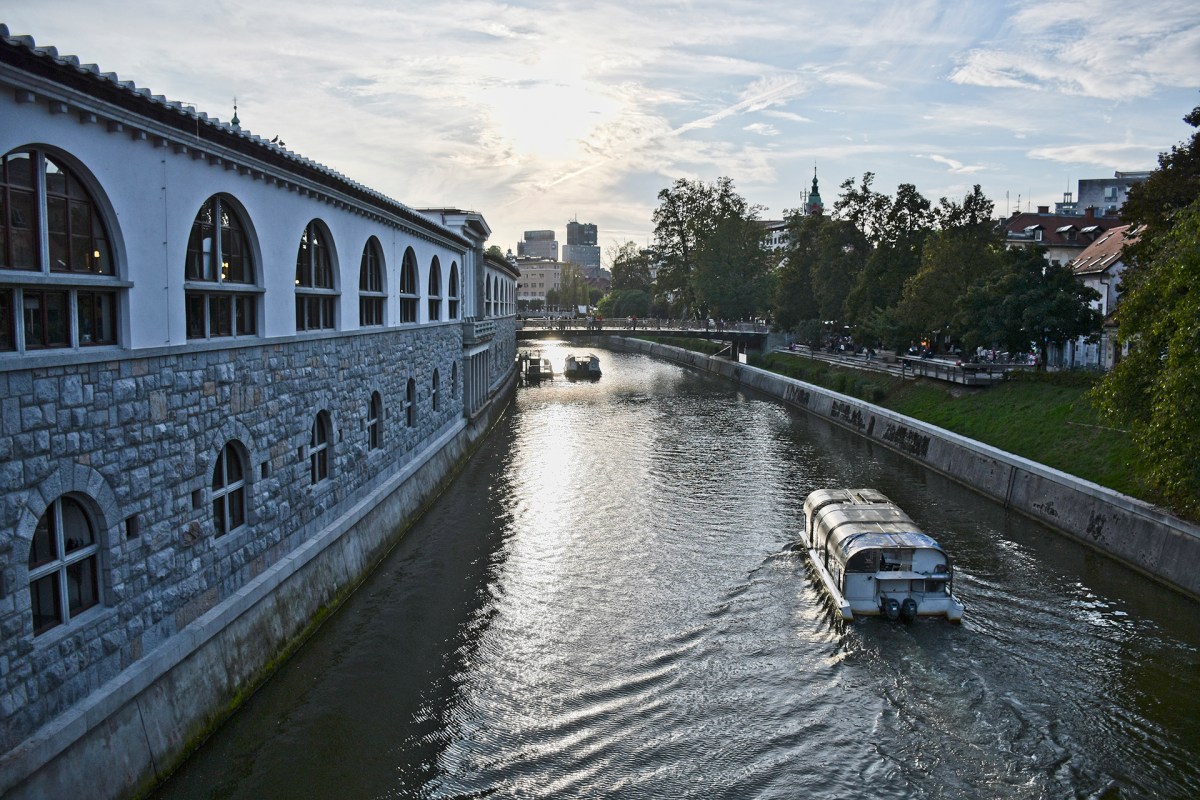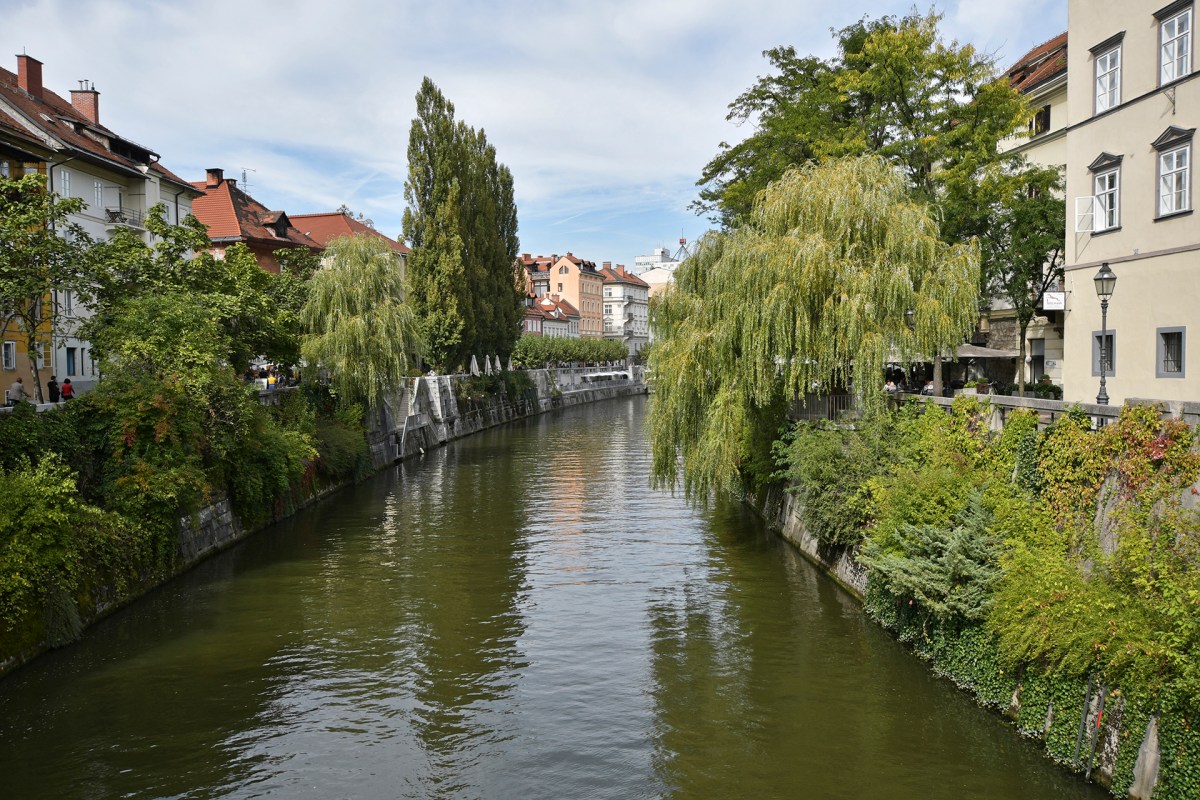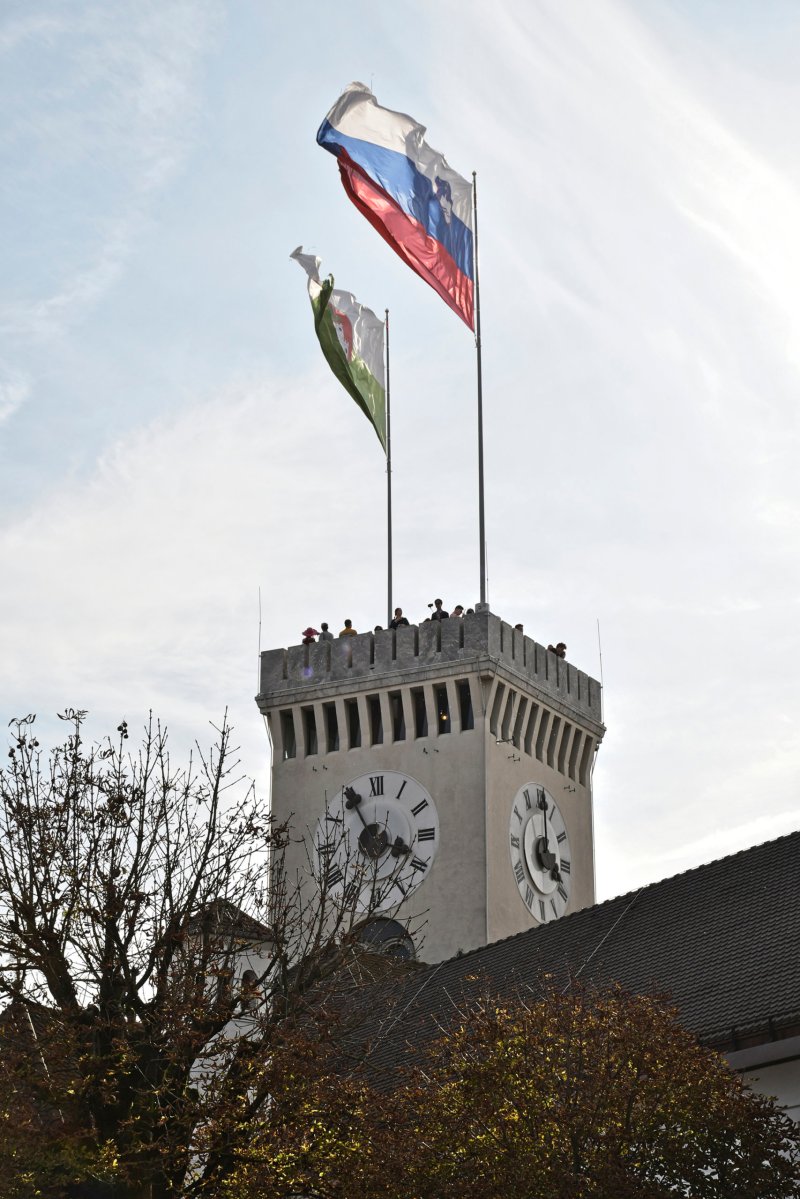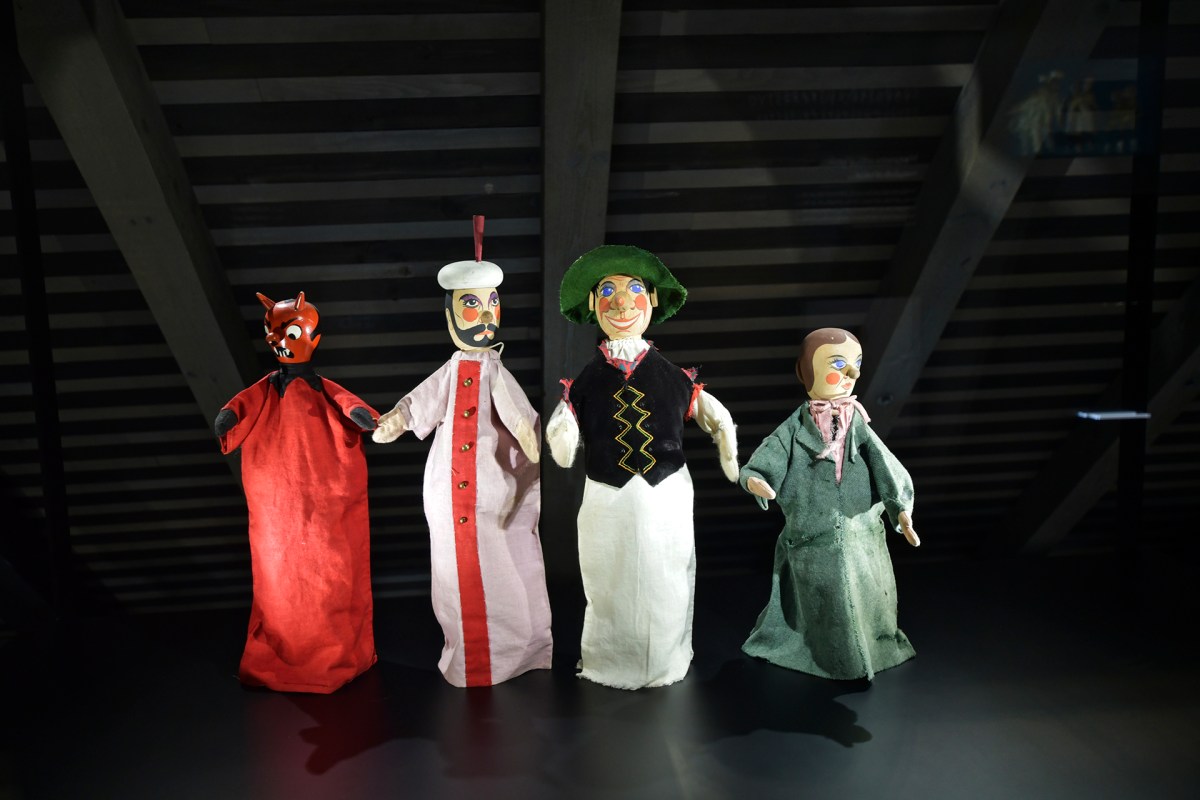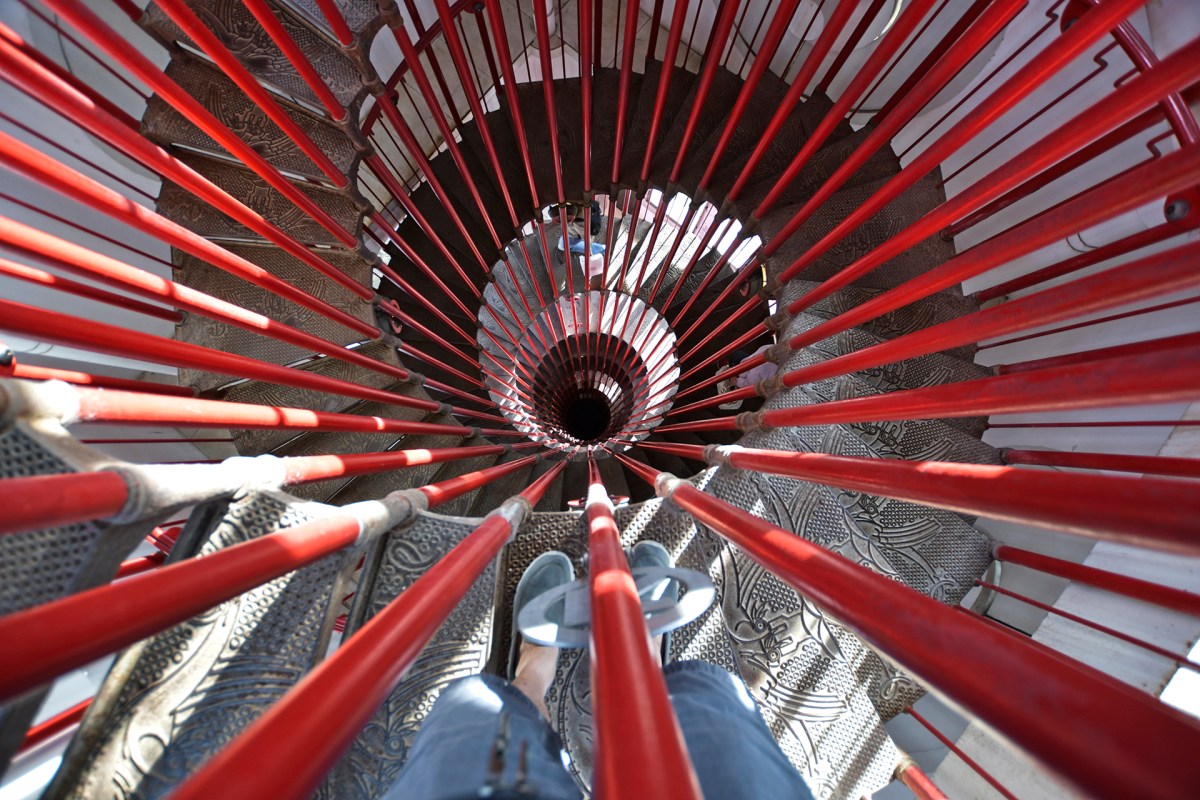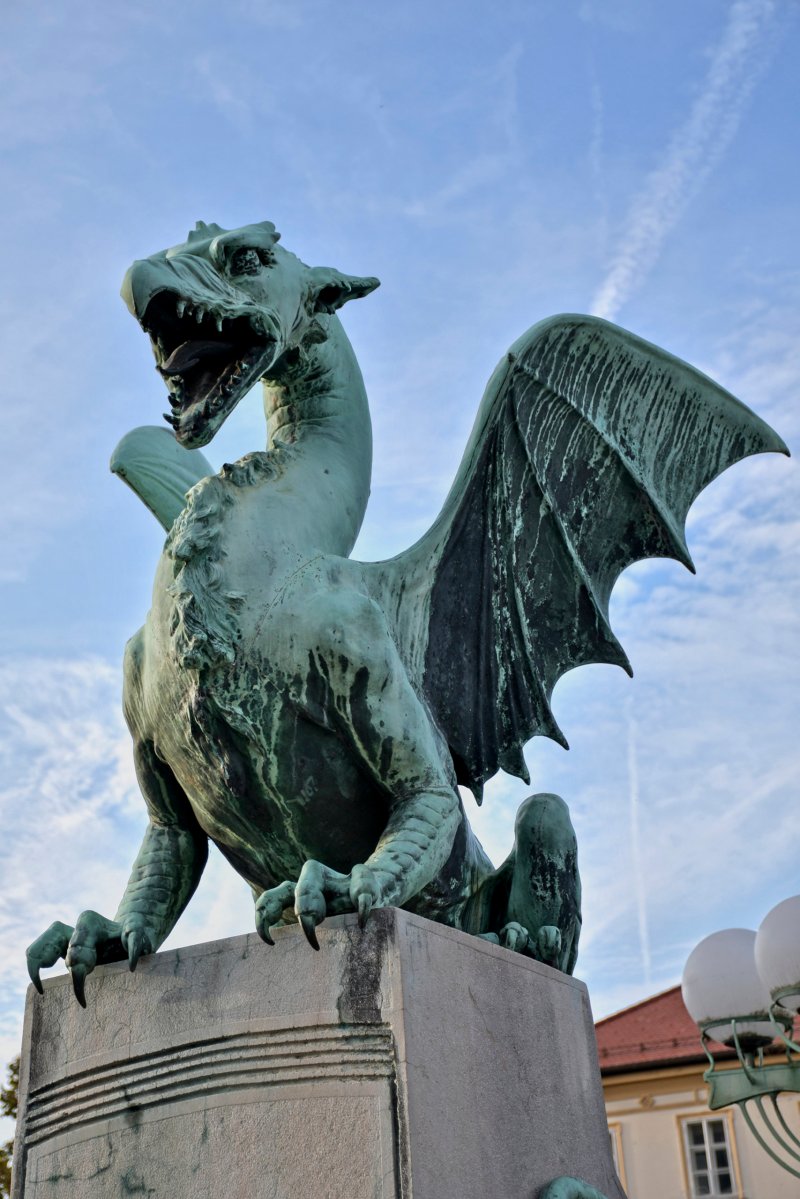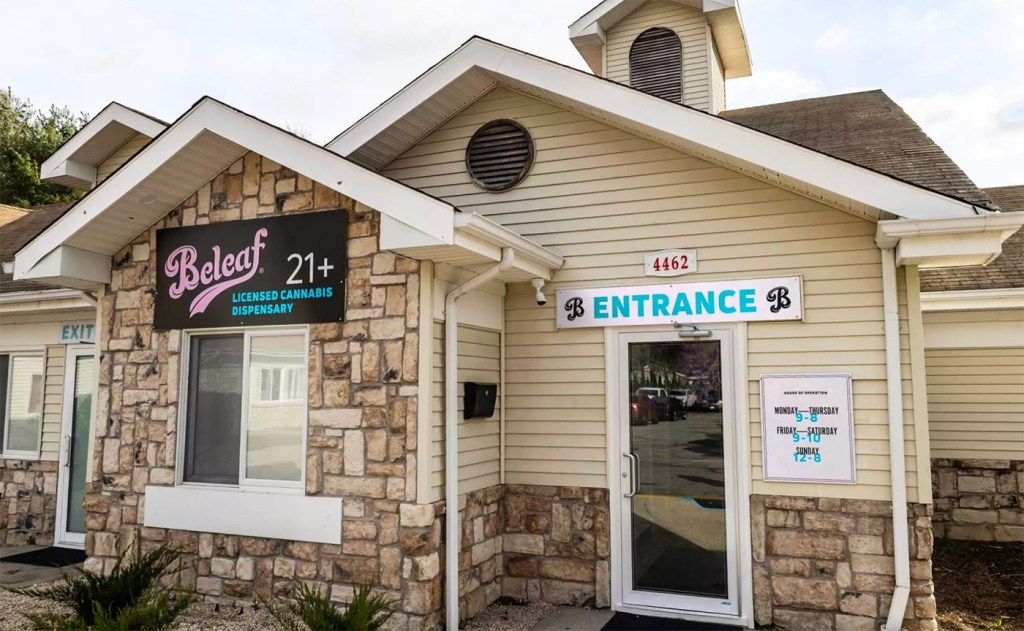Off To Slovenia
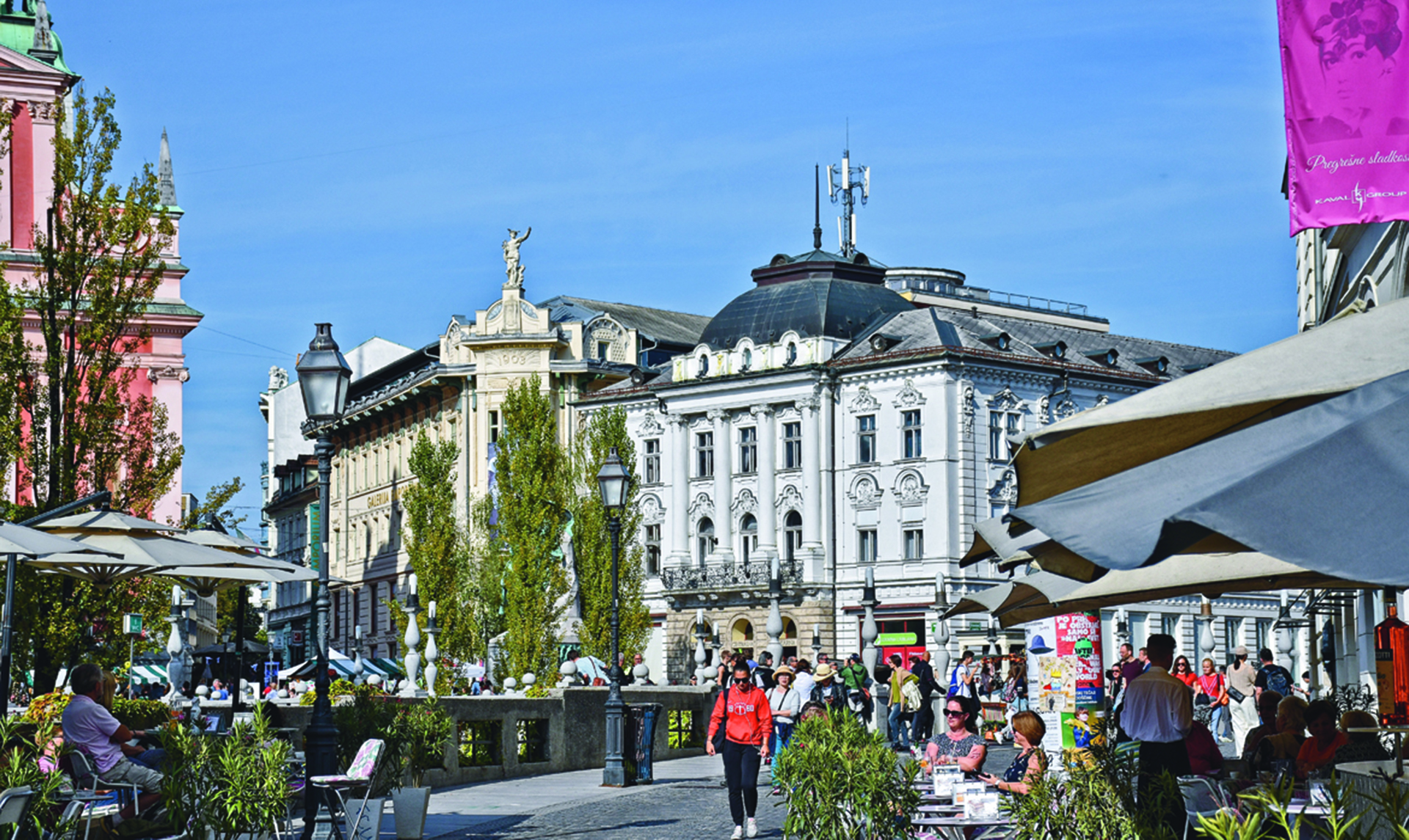
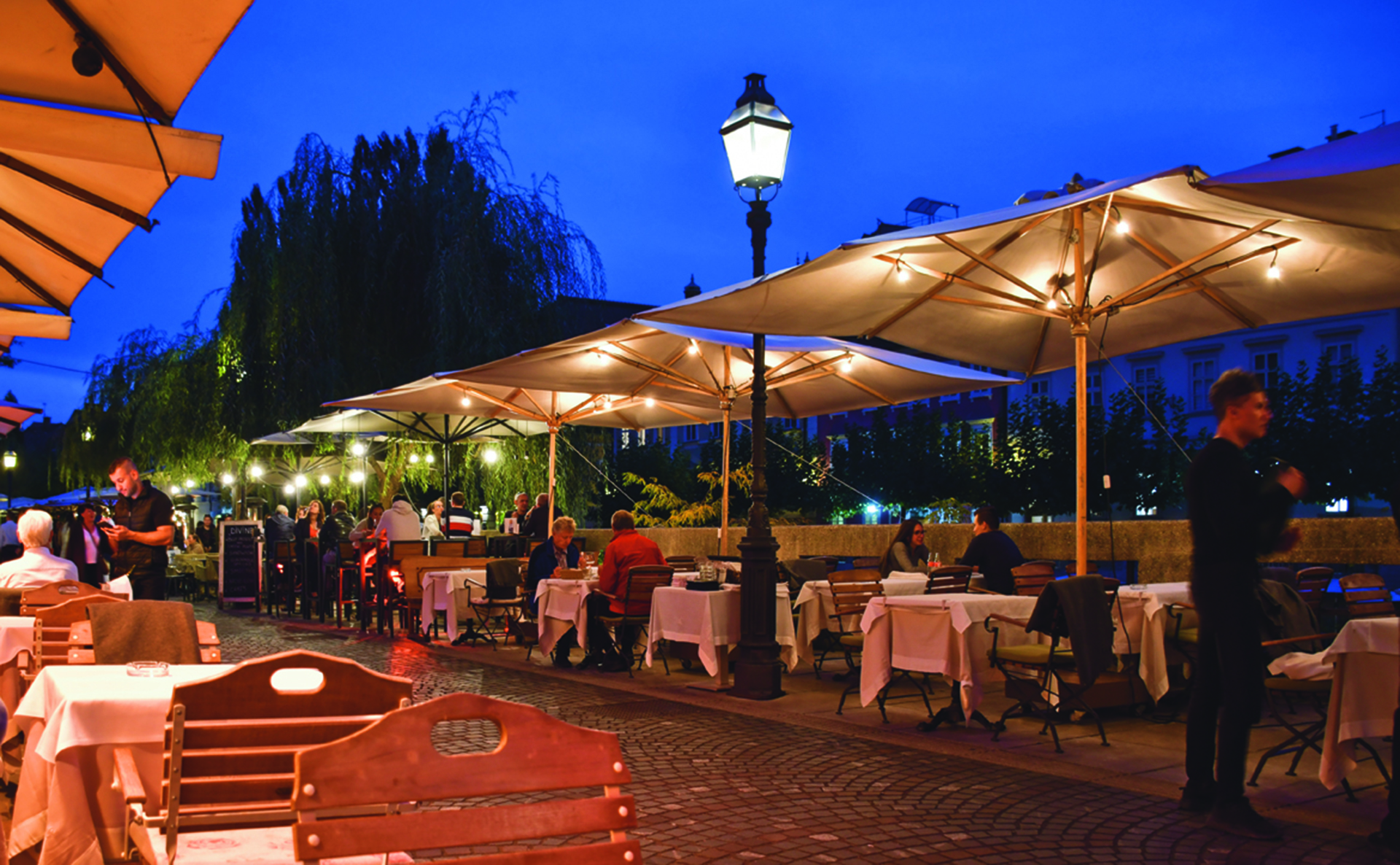
For most of its history, Slovenia was controlled by Austria and was part of the Austro-Hungarian Empire. And at one time, even Venice ruled over some of Slovenia’s coastline. Then, it became part of Yugoslavia and was under communist rule from post-World War II until 1991, when a multiparty, democratic government emerged. With their new government in place, Slovenians have prospered, and the country became part of the European Union in 2004. Ljubljana — a tough name to spell — is Slovenia’s capital and most populous city, with nearly 300,000 residents. Large for Slovenia, but one of the smallest of the European capitals.
Ljubljana is a great city to wander around, and it’s easy to enjoy a full day there. We started from Tivoli Car Park, which was within easy walking distance to the center of town. From Tivoli, you pass by mostly modern buildings before you reach the old town, which boasts a colorful Open Market, many museums, and Ljubljanski Grad, or Ljubljana Castle, by far the best place to view the city. Perched on a hill in the heart of the city, it’s easily reached by a funicular, and you can even ride up and down the funicular and enjoy the castle courtyard without a Castle Ticket.
But the Castle Ticket was well worth it, if for no other reason than climbing the spiral staircase of the watchtower to its fabulous view of the city. Plus, there are lots of exhibits, castle tours with Medieval-costumed guides, and a charming Museum of Puppetry (a must if the kids are with you) to go along with the view.
And, on the day we were exploring the old city, a festival of food, Ljubljana’s Odprta Kuhna, or Open Kitchen, was in full swing. You name a type of food and you could find it there. Every sunny Friday, from late March through October, seemingly hundreds of food and beverages stands offer countless types of food. On a beautiful sunny day in late September, it was a carnival atmosphere, with people everywhere.
After sampling a few pastries in the midst of this bustling scene, we later opted for a quieter café, Zlata ribica, where we had a lovely and inexpensive dinner beside the Ljubljanica, the river that meanders through the center of the old city. It lazily dissects the old city as it goes from one city square to a bridge to a square to yet another bridge. With a river wandering through it, the center of the old town is full of bridges and attractive squares, with riverside restaurants everywhere.
The most famous place to cross the river is the Dragon Bridge, with its many statues depicting the mythic creatures. The Ljubljana Dragon is the symbol of the city, representing courage, grandeur, and power. It’s on the city flag, and many of its sports clubs also claim it as their mascot. Another celebrated place to cross is the unusual Triple Bridge, an architectural gem created by architect Joze Plecnik, who had a major impact on the modern architecture of Slovenia and Prague.
On most days, the Central Market in the Vodnikov trg and Pogacarnev trg squares, is the place to shop or enjoy a bite at one of its street food kiosks. There are also two covered sections of the market. The open-air section is open weekdays from 6 AM to 6 PM, Saturdays from 6 AM to 4 PM and the covered sections are open from 7 AM to 4 PM weekdays and 7 AM to 2 PM Saturdays. If you are there for Open Kitchen, you’ll find it takes over the spaces at Pogacarnev trg square.
olddogsnewtrips@gmail.com
